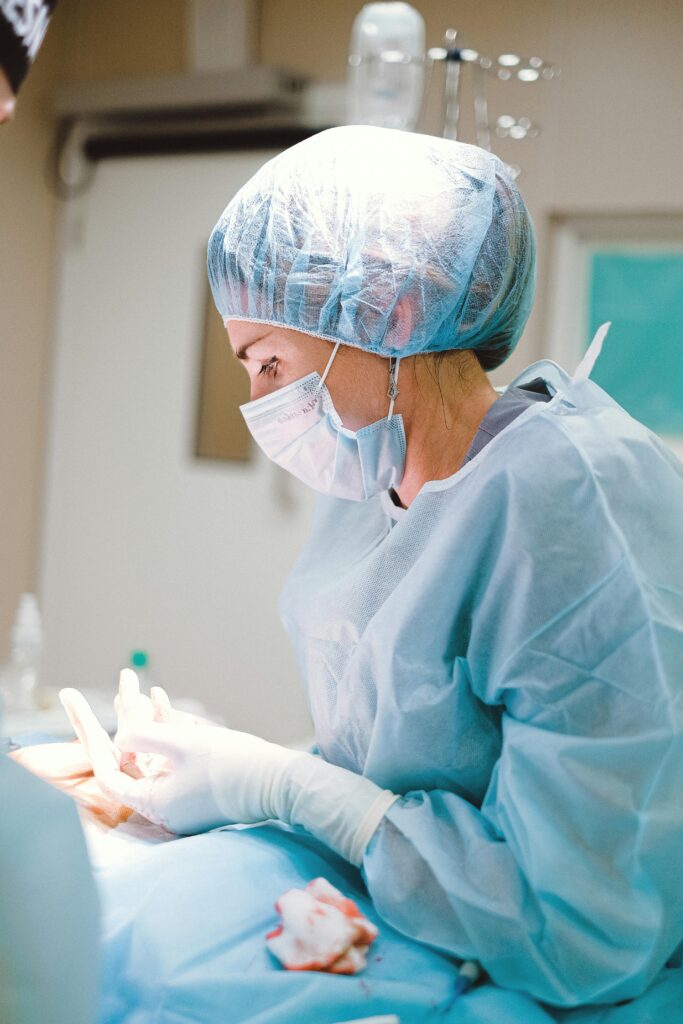Introduction
Sexually transmitted diseases (STDs), also known as sexually transmitted infections (STIs), are infections primarily spread through sexual contact. They can have significant health consequences if left untreated, affecting reproductive health, increasing the risk of certain cancers, and impacting overall well-being. This article explores various STDs, their causes, symptoms, diagnostic approaches, and comprehensive strategies for prevention, treatment, and improving sexual health.
Importance of Sexual Health
Maintaining sexual health is crucial for several reasons:
- Reproductive Health
- Preventing and treating STDs helps maintain fertility and reduce complications such as pelvic inflammatory disease (PID) and ectopic pregnancies.
- Sexual health influences the ability to conceive and have a healthy pregnancy.
- Prevention of Serious Health Conditions
- Untreated STDs can lead to serious health issues, including chronic pain, organ damage, and increased risk of certain cancers (e.g., cervical cancer).
- Some STDs, such as HIV, can have life-threatening consequences without proper management.
- Overall Well-being
- Sexual health contributes to emotional and psychological well-being, promoting healthy relationships and self-esteem.
- Prevention and early treatment of STDs reduce anxiety, stress, and stigma associated with infections.

Common Types of Sexually Transmitted Diseases
Identifying the type of STD is crucial for appropriate treatment and preventing complications:
- Chlamydia
- Causes: Bacterial infection caused by Chlamydia trachomatis.
- Symptoms: Often asymptomatic, but can cause genital pain, discharge, and burning during urination. In women, it may lead to PID if untreated.
- Management: Antibiotic treatment (e.g., azithromycin, doxycycline) and screening for sexual partners.
- Gonorrhea
- Causes: Bacterial infection caused by Neisseria gonorrhoeae.
- Symptoms: Similar to chlamydia, including genital pain, discharge, and painful urination. May also cause rectal and throat infections.
- Management: Dual antibiotic therapy (e.g., ceftriaxone and azithromycin) and partner notification for testing and treatment.
- Syphilis
- Causes: Bacterial infection caused by Treponema pallidum.
- Stages: Primary (painless sores), secondary (rash, mucous membrane lesions), latent, and tertiary (severe systemic complications).
- Management: Antibiotic treatment (e.g., penicillin) tailored to the stage of infection and regular follow-up testing.
- Human Papillomavirus (HPV)
- Causes: Viral infection with multiple strains, some causing genital warts and others linked to cancers (e.g., cervical, anal, throat).
- Symptoms: Often asymptomatic, but can cause genital warts or abnormal Pap smear results indicating precancerous changes.
- Management: Vaccination (e.g., Gardasil) for prevention, regular screenings (Pap smear, HPV test), and treatment of warts or precancerous lesions.
- Genital Herpes
- Causes: Viral infection caused by herpes simplex virus (HSV-1 or HSV-2).
- Symptoms: Painful blisters or sores on the genitals, rectum, or mouth, along with flu-like symptoms during initial outbreak.
- Management: Antiviral medications (e.g., acyclovir, valacyclovir) to manage outbreaks and reduce transmission risk.
- Human Immunodeficiency Virus (HIV)/Acquired Immunodeficiency Syndrome (AIDS)
- Causes: Viral infection caused by HIV, which attacks the immune system.
- Symptoms: Initial flu-like symptoms, followed by a long asymptomatic period and eventual progression to AIDS if untreated.
- Management: Antiretroviral therapy (ART) to control viral load, prevent transmission, and improve quality of life.
- Trichomoniasis
- Causes: Parasitic infection caused by Trichomonas vaginalis.
- Symptoms: Vaginal discharge, itching, discomfort during intercourse, and urinary symptoms in women; often asymptomatic in men.
- Management: Antibiotic treatment (e.g., metronidazole) for both partners to prevent reinfection.
Symptoms of Sexually Transmitted Diseases
Symptoms vary depending on the type of STD and may range from mild to severe:
- Genital Symptoms: Pain, itching, sores, blisters, warts, unusual discharge, burning during urination, and genital swelling.
- Systemic Symptoms: Fever, body aches, swollen lymph nodes, rash, and flu-like symptoms (e.g., in early HIV infection).
- Asymptomatic Infections: Many STDs, including chlamydia, gonorrhea, and HPV, can be asymptomatic, highlighting the importance of regular screenings.
Diagnostic Approaches
Diagnosing STDs involves a combination of clinical evaluation, laboratory testing, and patient history:
- Clinical Evaluation
- Physical Examination: Inspection of genital, anal, and oral regions for signs of infection (e.g., sores, discharge, warts).
- Medical History: Inquiry about sexual practices, partner history, symptoms, and previous STD diagnoses or treatments.
- Laboratory Tests
- Nucleic Acid Amplification Tests (NAATs): Detect genetic material of bacteria or viruses (e.g., chlamydia, gonorrhea, HIV) from swabs or urine samples.
- Blood Tests: Screen for antibodies or antigens (e.g., HIV, syphilis, hepatitis B).
- Pap Smear and HPV Test: Detect precancerous changes and HPV infection in the cervix.
- Point-of-Care Testing
- Rapid tests for certain STDs (e.g., HIV, syphilis) providing quick results and enabling immediate counseling and treatment.
Managing and Treating Sexually Transmitted Diseases
Treatment goals focus on eradicating the infection, managing symptoms, preventing complications, and reducing transmission risk:
- Medications
- Antibiotics: Effective for bacterial STDs (e.g., chlamydia, gonorrhea, syphilis, trichomoniasis) to eliminate infection.
- Antivirals: Manage viral STDs (e.g., herpes, HIV) by reducing viral load, controlling symptoms, and preventing disease progression.
- Vaccinations: Prevent infections like HPV and hepatitis B, reducing the risk of related cancers and liver disease.
- Partner Notification and Treatment
- Informing sexual partners about the infection for testing and treatment to prevent reinfection and further spread.
- Expedited partner therapy (EPT) where legally permitted, allowing treatment without a clinical visit for the partner.
- Lifestyle Modifications and Prevention
- Safe Sex Practices: Consistent use of condoms, dental dams, and other barrier methods to reduce transmission risk.
- Regular Screenings: Routine testing for sexually active individuals, especially those with multiple partners or high-risk behaviors.
- Education and Counseling: Providing information on STD prevention, symptoms, and the importance of treatment adherence.
- Long-Term Management and Support
- Chronic Infections: Long-term monitoring and care for individuals with chronic infections like HIV, including mental health support and community resources.
- Fertility and Pregnancy: Addressing reproductive health concerns and ensuring safe pregnancies for infected individuals.
Preventive Measures
Promoting sexual health and preventing STDs involve proactive measures and informed choices:
- Vaccinations
- HPV Vaccine: Recommended for preteens, teenagers, and young adults to protect against high-risk HPV strains and related cancers.
- Hepatitis B Vaccine: Part of routine childhood immunizations and available for adults at risk of infection.
- Safe Sexual Practices
- Condom Use: Consistent and correct use of condoms during vaginal, anal, and oral sex to reduce the risk of STD transmission.
- Mutual Monogamy: Being in a mutually monogamous relationship with a partner who has tested negative for STDs.
- Routine Screenings and Early Treatment
- Regular STD screenings for sexually active individuals to detect and treat infections early, preventing complications and transmission.
- Prompt treatment of any diagnosed STDs and follow-up testing to ensure eradication of the infection.
- Education and Awareness
- Comprehensive sexual education programs providing accurate information on STDs, prevention methods, and the importance of regular testing.
- Reducing stigma and promoting open communication about sexual health to encourage testing and treatment.

Conclusion
Managing sexually transmitted diseases requires a comprehensive approach, including early diagnosis, personalized treatment plans, and preventive measures to promote sexual health and reduce transmission risks. By understanding the causes, symptoms, diagnostic approaches, and treatment options for various STDs, individuals can take proactive steps to protect their health and well-being. Collaboration with healthcare providers, adherence to treatment recommendations, and regular screenings are essential for optimizing sexual health and preventing complications.
Resources
- Centers for Disease Control and Prevention (CDC): Offers information on STDs, prevention strategies, and resources for testing and treatment.
- World Health Organization (WHO): Provides global guidelines, research updates, and educational materials on sexual health and STD prevention.
- Planned Parenthood: Offers confidential STD testing, treatment, education, and counseling services.
